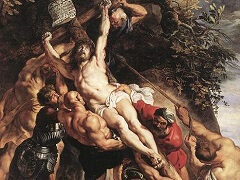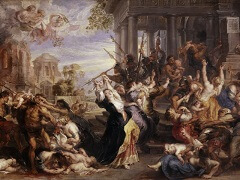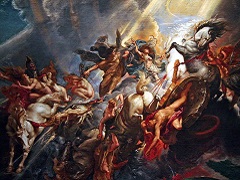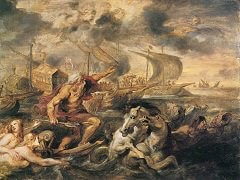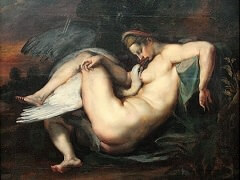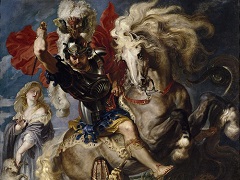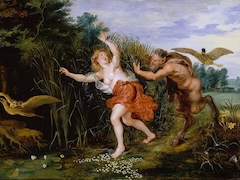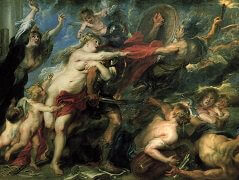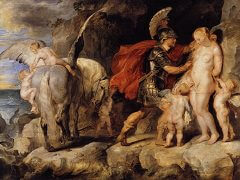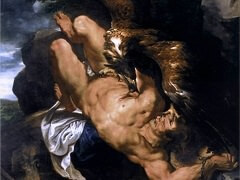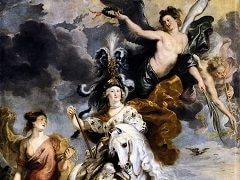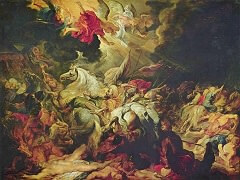Battle of the Amazons, 1615 by Peter Paul Rubens
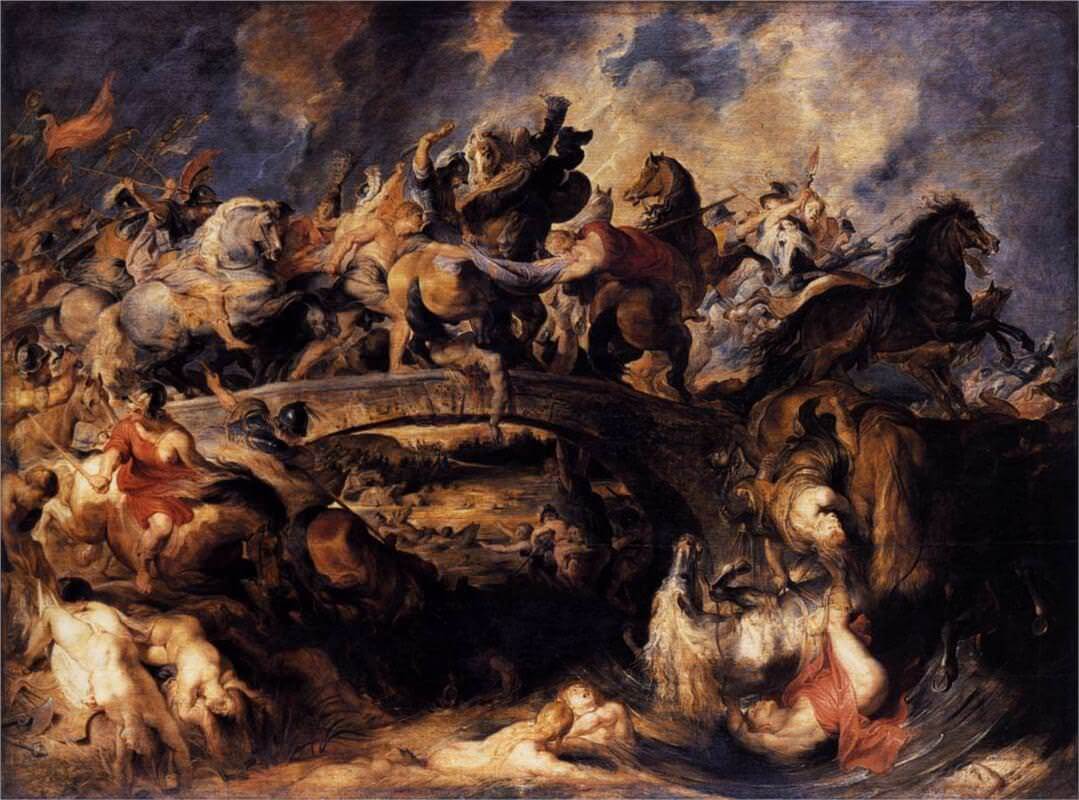
Rubens distinguished consistently in his mind between the large and the small format, and understood scale as many nineteenth-century artists failed to do: large works need to be simple, are often to be seen at a distance and take on some of the nature of decoration or even of architecture; small pictures may be more detailed and complex. He also understood that, whatever the degree of detail, every brush stroke must be made with scale in mind.
One of the finest of Rubens' pictures, crowded with figures and incidents, is the Battle of the Amazons which belonged first to Cornelis van der Geest. It was probably Rubens's thanksgiving for the commission for the Raising of the Cross; if so, the date of 1615 given by the painter's nephew is historically as well as stylistically apt. Certainly the picture occupies the best lit eye-level position - for it is a dark painting - in a contemporary view of Van der Geest's house gallery (by Willem van Haecht: Antwerp, Rubcnshuis). The lessons Rubens learned at second hand from Leonardo da Vinci's fragmentary Battle of Anghiari were not confined to the broad depiction of furious energy: Leonardo da Vinci like Rubens was a master of detail. The Amazons were a mythical race of warrior women in Asia Minor, who figure in many Classical stories; the scene depicted here is almost certainly their rout by the Greeks under Theseus on a bridge over the River Thermo-don. A firm arch of figures contains the whole mass of violent movements and warm colours and dominates the masonry bridge, on which the Athenians overtake the Amazons as the battle moves in one direction, from left to right; the bridge is too small for the figures, and horses and riders topple, hurtle or slither from it. Horses snort, prance and bite. Weapons are raised and thrusts made and parried; on the crown of the bridge, from which dangles the arm of a headless body, a man on foot tugs the Amazon standard from a rider already thrust through with a spear. On the left bank the dead arc plundered. The water too is full of figures, falling, swimming, shielding themselves from falling bodies and flailing hooves. Every figure adds to the narrative, while on the skyline a city burns, its smoke sweeping up behind the seething mass of bodies and continuing its motion into the sky.

